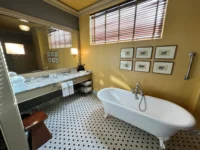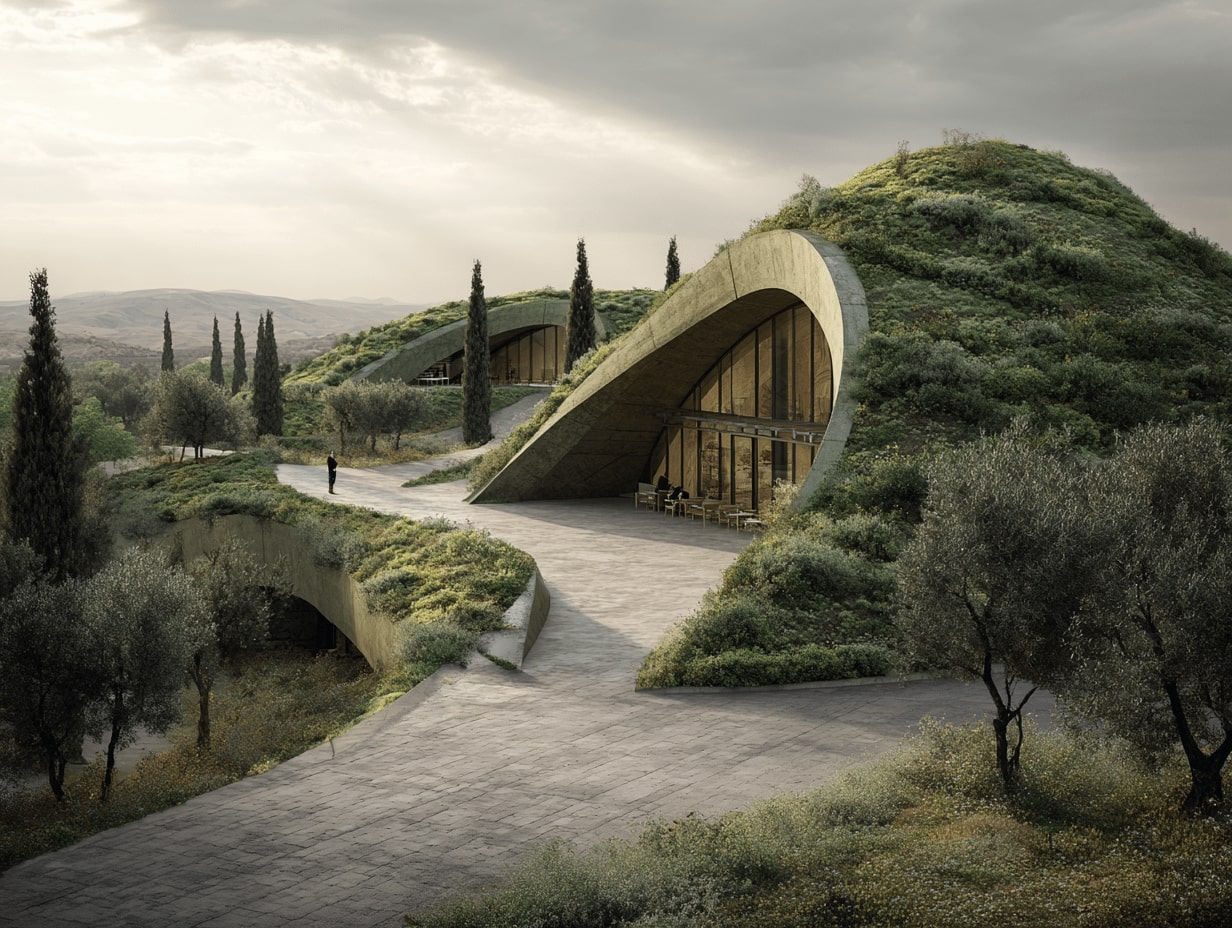- Home
- Articles
- Architectural Portfolio
- Architectral Presentation
- Inspirational Stories
- Architecture News
- Visualization
- BIM Industry
- Facade Design
- Parametric Design
- Career
- Landscape Architecture
- Construction
- Artificial Intelligence
- Sketching
- Design Softwares
- Diagrams
- Writing
- Architectural Tips
- Sustainability
- Courses
- Concept
- Technology
- History & Heritage
- Future of Architecture
- Guides & How-To
- Projects
- Interior Design
- Competitions
- Jobs
- Store
- Tools
- More
- Home
- Articles
- Architectural Portfolio
- Architectral Presentation
- Inspirational Stories
- Architecture News
- Visualization
- BIM Industry
- Facade Design
- Parametric Design
- Career
- Landscape Architecture
- Construction
- Artificial Intelligence
- Sketching
- Design Softwares
- Diagrams
- Writing
- Architectural Tips
- Sustainability
- Courses
- Concept
- Technology
- History & Heritage
- Future of Architecture
- Guides & How-To
- Projects
- Interior Design
- Competitions
- Jobs
- Store
- Tools
- More
Bamboo: The Green Guardian of Architecture for Sustainable Design and Innovation
Discover how bamboo, the green guardian of architecture, is revolutionizing sustainable building practices. This article explores bamboo's remarkable versatility, rapid renewability, and minimal environmental impact. Learn about its strong structural properties and aesthetic appeal that enhance modern design.

Bamboo has long been celebrated for its incredible versatility and strength, but it’s now emerging as a key player in sustainable architecture. As we face the pressing challenges of climate change and resource depletion, this remarkable plant offers a renewable solution that’s both eco-friendly and aesthetically pleasing.
With its rapid growth and minimal environmental impact, bamboo stands as a powerful symbol of nature’s potential in modern design. By integrating bamboo into our architectural projects, we not only reduce our carbon footprint but also embrace a material that embodies resilience and beauty. Join us as we explore how bamboo is revolutionizing the way we think about building and sustainability, making it truly the green guardian of architecture.

Table of Contents
ToggleBamboo The Green Guardian of Architecture
Bamboo emerges as a pivotal material in sustainable architecture, combining strength and flexibility. Its tensile strength, comparable to steel, enables architects to design innovative structures that withstand various environmental stresses. Bamboo’s lightweight nature facilitates easier transportation and installation, which contributes to reducing construction costs and timelines.
Bamboo thrives globally, growing up to three feet daily under optimal conditions. This rapid growth ensures a continuous, renewable supply, which minimizes deforestation and enhances sustainable practices. According to recent studies, bamboo plantations generate 35% more oxygen than traditional forestry, playing a significant role in carbon sequestration.
Bamboo’s application extends across various architectural elements, including beams, columns, and wall panels. For instance, some modern buildings utilize bamboo in their frameworks and interior design, creating an aesthetic that resonates with nature. This not only enhances the visual appeal but promotes a sense of well-being for the inhabitants.
Selecting bamboo for construction aligns with eco-friendly approaches. Bamboo absorbs high levels of carbon dioxide during growth, helping counteract greenhouse gas emissions. Incorporating bamboo surfaces also decreases the need for additional coatings or treatments, minimizing harmful chemical usage.
We observe architects increasingly favoring bamboo for its sustainability benefits, driving innovation in green architecture. This material’s adaptability in urban and rural settings proves its versatility across different climatic conditions. As we progress, bamboo’s acceptance in mainstream design practices establishes it as a cornerstone of future sustainable architecture.
Benefits of Bamboo in Construction
Bamboo offers multiple advantages in construction, reinforcing its status as a vital resource in sustainable architecture. Below are key benefits highlighting bamboo’s role in eco-friendly building practices.

Sustainability and Eco-Friendliness
Bamboo’s rapid renewability makes it a top choice for sustainable construction. It grows up to three feet daily and can reach maturity in three to five years, allowing for swift replenishment compared to traditional timber, which may take decades. Bamboo absorbs significant amounts of carbon dioxide, making it effective in reducing greenhouse gases. Studies show bamboo plantations produce 35% more oxygen than conventional forests, enhancing local air quality. Additionally, using bamboo reduces reliance on chemically treated materials, supporting safer environments for both builders and occupants. Its minimal land requirements and ability to thrive in various climates further solidify bamboo’s position as a sustainable building material.
Strength and Durability
Bamboo’s impressive tensile strength rivals that of steel, making it suitable for diverse architectural applications. This strength enables structures to withstand heavy loads and resist environmental stresses, such as earthquakes and strong winds. Its lightweight nature simplifies transportation and installation, leading to decreased labor costs and reduced energy consumption during construction. Bamboo’s natural resilience to pests and moisture contributes to its longevity, requiring less maintenance over time. Architects leverage bamboo’s durability for innovative designs, ensuring aesthetic appeal without compromising structural integrity. By incorporating bamboo, we position ourselves at the forefront of sustainable construction, emphasizing both performance and environmental responsibility.
Applications of Bamboo in Architecture
Bamboo serves as a versatile material in architecture, finding applications in various building types. Its unique properties contribute to sustainable designs across residential and commercial settings.

Residential Buildings
Bamboo enhances residential buildings through its aesthetic appeal and structural benefits. We utilize bamboo for frameworks, flooring, and wall systems, providing strength while delivering warmth and natural beauty. Its rapid growth allows for quick construction timelines, so homeowners benefit from reduced building costs and timelines. We also appreciate bamboo’s thermal insulating properties, promoting energy efficiency in homes. Its adaptable nature supports various architectural styles, from traditional designs to contemporary structures, making bamboo a favored choice for residential projects.
Commercial Spaces
Bamboo’s applications in commercial spaces demonstrate its practicality and eco-friendliness. We implement bamboo for large structural components like beams and columns, enabling open, airy interiors that attract businesses seeking innovative designs. Bamboo finishes, such as ceilings and wall panels, contribute to a calming atmosphere, enhancing customer experience. Its lightweight quality reduces the overall load on buildings, permitting flexible design iterations. We recognize that using bamboo not only fulfills aesthetic and functional requirements but also aligns with corporate sustainability initiatives, appealing to eco-conscious consumers. These characteristics solidify bamboo’s position as a key material in the construction of modern commercial facilities.
Innovative Bamboo Designs
Bamboo stands at the forefront of contemporary architecture, embodying innovation and sustainability. Its unique properties foster creative designs that merge functionality with aesthetic appeal.

Modern Architectural Trends
Urban landscapes increasingly showcase bamboo in innovative architectural trends. Architects leverage bamboo’s pliability to create flowing forms and open spaces. Structures like the Green School in Bali exemplify bamboo’s potential, featuring vaulted roofs and expansive interiors that promote natural light and air circulation. We observe eco-friendly initiatives integrating bamboo into high-rise buildings, utilizing modular systems that minimize waste while enhancing structural efficiency. Modern designs often incorporate bamboo into hybrid structures, combining conventional materials with this versatile grass to maximize sustainability while minimizing environmental impact.
Cultural Significance
Bamboo carries deep cultural significance in numerous regions worldwide. In Asia, bamboo symbolizes strength and flexibility, contributing to traditional architectural elements such as pagodas and pavilions. Its versatility inspires artisans who craft furniture and decor that resonate with local heritage. We embrace bamboo’s cultural roots, recognizing its role in sustainable development that honors traditional practices while meeting contemporary needs. Countries like Japan and China exemplify this fusion, as their architectural styles reflect a harmonious relationship with nature through bamboo use, enhancing community spaces and promoting environmental awareness.
Challenges and Limitations
Bamboo, despite its numerous advantages, faces distinct challenges and limitations that impact its integration into modern architecture. Understanding these factors is crucial for architects and builders considering this sustainable material.

Environmental Concerns
Environmental concerns surrounding bamboo primarily relate to sustainable harvesting practices. Unsustainable logging can lead to ecosystem disruptions and loss of biodiversity. Although bamboo grows rapidly, some species risk overharvesting, affecting local wildlife habitats and soil health. Additionally, transporting bamboo over long distances contributes to carbon emissions, undermining its sustainability appeal. Advocating for local sourcing and responsible management ensures that bamboo’s environmental benefits remain intact.
Building Regulations
Building regulations often present obstacles for bamboo’s widespread use. Many regions lack established codes that specifically address bamboo construction. These codes can complicate the approval process for bamboo structures, causing delays and increased costs. Training architects and builders on bamboo’s unique properties is essential for compliance with safety standards. Establishing clearer guidelines can encourage broader acceptance and integration of bamboo in architectural designs, enabling us to maximize its potential as a sustainable building material.
Conclusion
Bamboo emerges as a crucial element in sustainable architecture, showcasing attributes like rapid growth and exceptional tensile strength. The ability of bamboo to thrive in diverse environments contributes to its appeal in eco-friendly construction, making it a renewable resource with minimal environmental impact. As architects embrace bamboo for its durability and aesthetic qualities, we see a shift toward innovative designs that prioritize sustainability.
Bamboo’s applications in both residential and commercial projects highlight its versatility. Structures made from bamboo not only enhance visual appeal but also improve energy efficiency and reduce construction timelines. The continued exploration of bamboo’s potential through creative design further solidifies its status as a revolutionary material in modern architecture.
We showcase bamboo’s cultural significance and its integration into contemporary practices across various regions. Understanding local heritage and traditions can foster a deeper appreciation for bamboo, ensuring that its use promotes both environmental stewardship and community well-being.
Challenges such as sustainable harvesting and regulatory hurdles must be addressed to witness bamboo flourish in architectural settings globally. Advocating for responsible sourcing and stronger building codes can enhance its viability. By championing bamboo, we can collectively move toward a greener future in construction that respects nature and enhances our living environments.
- Bamboo architecture
- bamboo building techniques
- Bamboo Flooring
- bamboo for construction
- bamboo for sustainable living
- bamboo in modern architecture
- bamboo innovation in architecture
- bamboo structural systems
- eco-conscious construction methods
- eco-friendly building practices
- eco-friendly structural design
- environmentally friendly architecture
- green building design
- green construction
- innovative bamboo structures
- renewable building materials
- sustainable architecture solutions
- sustainable building materials
- Sustainable Design
- sustainable home design with bamboo
Submit your architectural projects
Follow these steps for submission your project. Submission FormLatest Posts
Architecture of Climate: Designing for Heat, Cold, and Storms
Architecture of climate: a practical guide to designing for heat, cold, and...
Sustainable Home Design Starts Underground: The Overlooked Role of Septic Systems
When we think of sustainable home design, most people picture solar panels,...
Understand Site Topography and Its Role in Sustainable Design for Eco-Friendly Solutions
Discover how understanding site topography transforms sustainable design by optimizing energy use,...
Exploring the Current Uses of Green Roofs: Benefits for Urban and Rural Spaces
Discover the growing uses of green roofs in urban and rural spaces,...












Leave a comment